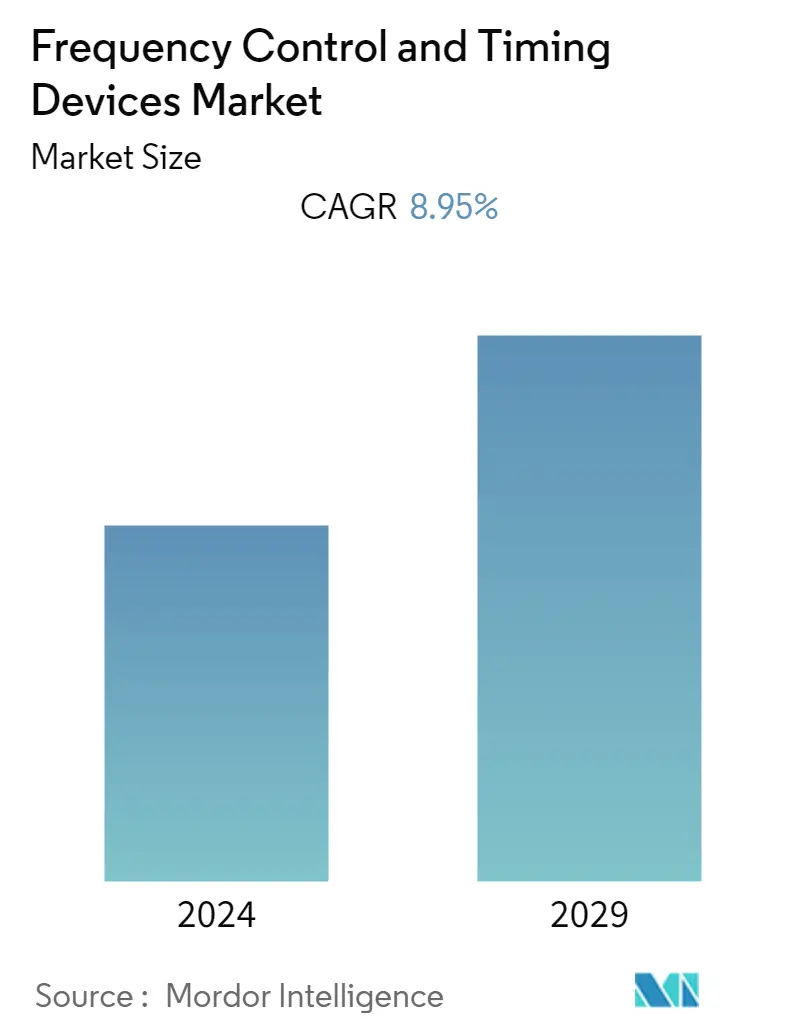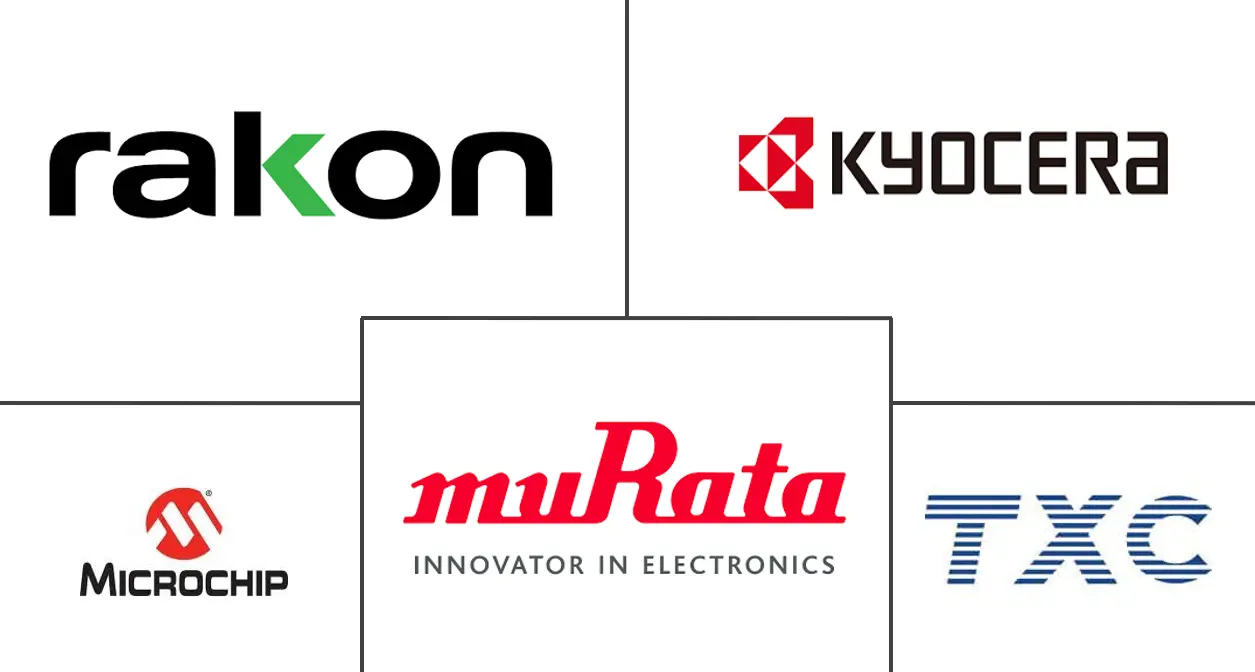Market Size of Frequency Control and Timing Devices Industry

| Study Period | 2019 - 2029 |
| Base Year For Estimation | 2023 |
| CAGR | 8.95 % |
| Fastest Growing Market | Asia-Pacific |
| Largest Market | Asia-Pacific |
| Market Concentration | Low |
Major Players
*Disclaimer: Major Players sorted in no particular order |
Need a report that reflects how COVID-19 has impacted this market and its growth?
Frequency Control and Timing Devices Market Analysis
The Global Frequency Control and Timing Devices Market is expected to witness growth at a CAGR of 8.95% over the forecast period (2022- 2027). The COVID-19 outbreak has affected the global electronics industry supply chain significantly, affecting the demand and growth in the studied market. Supply chains across the most electronic sectors felt the substantial impact of COVID-19 at every production level. In 2020, many factories halted for a while or reduced their capacity, and suppliers struggled to keep up with demand due to limited production. As the second wave was witnessed in many countries in 2021, that effect is expected to continue until mid this year. Motherboard shortages are placing heavy pressure on manufacturers, but so are similar scarcity of raw materials for crystal and MEMS oscillators.
- The increasing demand for convenience is driving the application of wireless interconnections, such as remote keyless entry. Crystal devices, such as quartz crystal units and oscillators, have higher stability against environmental changes. Therefore, they are increasingly used as frequency control devices in electronic circuits. The application of crystal units and oscillators in automobiles is expected to grow during the forecast period.
- Moreover, crystal-based timing devices are widely used in safety applications, such as brake control systems, anti-locking systems, and airbag and tire pressure monitoring systems (TPMS). The demand for precision, improving regulations for safety applications, and the necessity for fast data transmission are driving the adoption of timing devices.
- Automotive system developers use resonators and oscillator timing solutions that are prone to shock and vibration issues. With the advent of ADAS, the requirement for clocking, complex data acquisition rates, and low jitter reference clocks is increasing. Vendors in the market studied are expected to focus on developing and offering such solutions over the coming years.
- For instance, Epson extended the highest available frequency on the low-jitter oscillator. The company increased the upper-frequency limit to 500 MHz from 200 MHz. This move aligned with the expected network requirement for high speed and wideband due to the 5G communication traffic growth.
- Further, the demand for various frequency control oscillators has improved the use of Wi-Fi and Bluetooth combo chipsets in smartphone applications. Considering the increasing support for these applications in consumer products, the consumer electronics segment is expected to see strong potential growth during the forecast period. Furthermore, the growing advancement of RF communication and component used in consumer electronics, owing to trends like IoT, is also expanding the studied market growth. Huawei's new series of smartphones, like the P30, include crystal oscillators supplied by Japan-based Kyocera.
